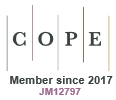About the Journal
International Journal of Wildland Fire publishes new and significant papers that advance basic and applied research concerning wildland fire. The journal welcomes papers aimed at understanding the basic principles of fire as a process; its interactions with the weather and climate; its impacts on ecology, hydrology, geomorphology, landscape carbon dynamics, the atmosphere, and society; modelling fire and its effects; or presenting information on how to effectively and efficiently manage fire. Manuscripts from physical, biological and social sciences will be considered.
The journal has an international perspective, since wildland fire plays a major social, economic and ecological role in many regions of the world and strongly interacts with global climate change.
Publishing Model: Open Access
International Journal of Wildland Fire began publication in 1991 and is published on behalf of the International Association of Wildland Fire.
The Editorial Advisory Committee of International Journal of Wildland Fire is pleased to offer an annual Outstanding Associate Editor Award to Associate Editors who have delivered a sustained and exceptional level of service to the Journal.
Follow the journal on social media by using the hashtag #IJWildlandFire and following @ijwildlandfire.bsky.social on Bluesky.
ISSN: 1049-8001
eISSN: 1448-5516
Frequency: 12
issues
per year
Current Issue:
Volume 34 (3)
Impact Factor: 2.9
Indexed/Abstracted in:
- All-Russian Institute of Scientific and Technical Information
- Biological Abstracts
- BIOSIS Previews
- CAB Abstracts
- Chemical Abstracts
- Current Contents/Agriculture, Biology & Environmental Sciences
- EBSCO/EBSCO Discovery
- Journal Citation Reports/Science Edition
- Pollution Abstracts
- ProQuest (Ex Libris)
- Science Citation Index
- SciSearch
- Scopus
CSIRO Publishing publishes and distributes scientific, technical and health science books, magazines and journals from Australia to a worldwide audience and conducts these activities autonomously from the research of the Commonwealth Scientific and Industrial Research Organisation (CSIRO). The views expressed in this publication are those of the author(s) and do not necessarily represent those of, and should not be attributed to, the International Association of Wildland Fire, the publisher or CSIRO.



